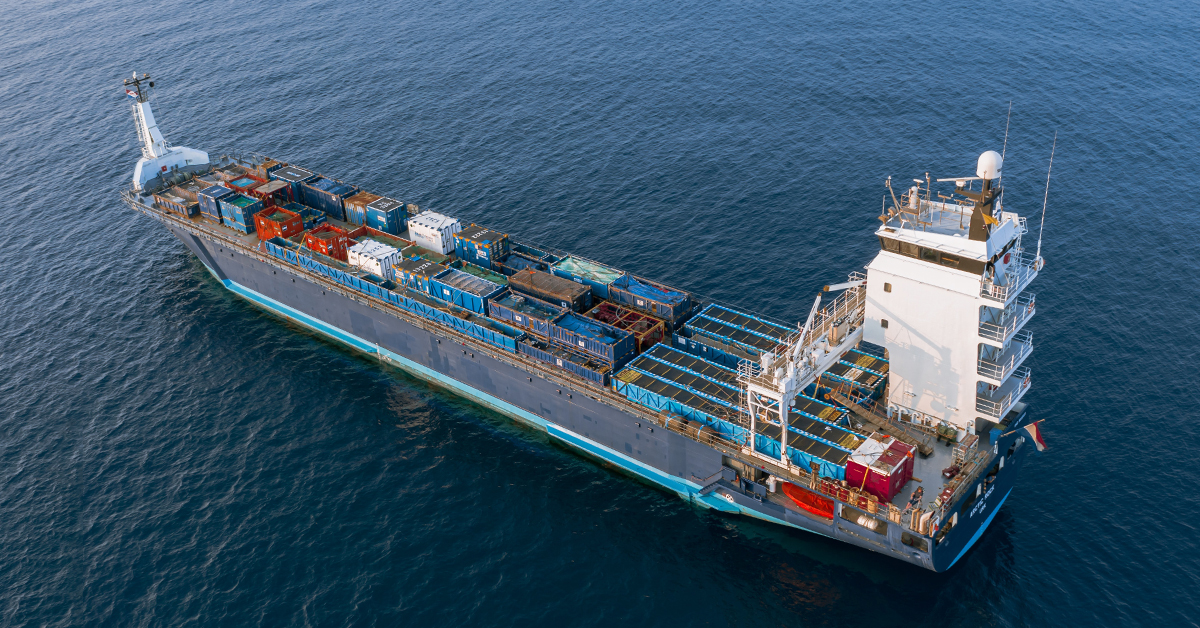Can passengers travel onboard container ships/freighters?

Since the dawn of time, one of the prime motivations for man to look ahead with anticipation and optimism was by venturing into the unknown by traversing distant places. Man has been colonizing the world from pre-historic times, and his quest continues till this day with migrations to different parts of the world to seek adventure and greener pastures. Man’s adventurous habits continue in different ways, and they persevere with such missions by travelling across vastly separated territories by road, air and sea.
Modern cruise ships cater to travellers on a holiday seeking entertainment, fun, relaxation, partying and great food. Cruise ships pamper travellers in every conceivable way and ensure that the exorbitant price of such premium travel is well-compensated by numerous luxuries on board.
But, are there less costly alternatives available to the budget-conscious traveller who wants to travel the oceans on a ship? The answer is “YES”, and here we will explore the exhilarating idea of travelling as a passenger in a container ship on payment of a charge.
In the earlier times, if a passenger desired to take a ride in a cargo ship, it was as easy as convincing the captain about one’s skills and experience in order to utilize them inside the ship as a reciprocation or compensation for the free ride. With the passage of time, these informal ways of accepting passengers onboard cargo ships have changed and the procedure has become more regulated. Modern cargo ships typically have a crew strength of 20 to 30 personnel, where each of them specializes in a particular skill and is assigned roles specific to his expertise. So the need for additional hands to supplement these tasks do not arise.
But to accommodate an increasing number of budget-conscious travellers who desire to travel in cargo ships, shipping companies are now offering such people the opportunity to travel as passengers. This arrangement also helps the shipping companies to generate additional revenue. The maximum allowed guests in a cargo ship averages 12, but if there are more guest passengers, international maritime laws mandate the presence of a doctor on board to provide treatment in an emergency.
Let’s explore some basic directions and important factors we must consider before deciding to embark upon a journey in a container ship.
* Cost: The average freighter travel cost for a passenger will range between US$100 to 150 per day. The exact amount depends upon the route the passenger chooses to reach a destination – whether Transatlantic, Transpacific, South Seas, Worldwide or other combinations. Free permitted luggage varies from 30 to 100 Kg depending on the freighter line chosen. The generally accepted currency on board is US Dollars.
* Flexibility: The scheduled departure and arrival of container ships are not guaranteed. Passengers must be prepared for deviations from scheduled timings which could fluctuate from a few days to weeks. To reach an intended destination, a passenger may have to hop into different ships at various ports to proceed with their voyage.
* Planning: Since cargo ships are primarily meant to transport containers, the number of cabins is restricted. So tickets on popular sea routes are often sold out months in advance.
* Insurance: Passengers must ensure that travel insurance specifically covers travel in freighter ships.
* No pre-scheduled activities on board: Apart from safety drills, there will be no scheduled activities. So passengers should be prepared to generate their own fun and entertainment by carrying personal audio and video gadgets.
* Connectivity: Most modern freighter ships are equipped with Wi-Fi connections, so if staying connected with the outside world is important to travellers, they must ensure that the ship they choose enjoys such communication facilities at affordable charges.
* Age factor: Because there will be no doctor on duty, only healthy individuals should choose the option to travel by freight ships. Most of the freight ships enforce an upper age limit barrier of 70 years.
The uncertainty surrounding timely departures, arrivals and onward connections from different ports mean that many a brave and adventurous traveller can look forward to exciting times in such voyages. Like the way we have discovered from life’s experiences, there’s no smooth sailing for anyone, and the passengers in a freighter ship particularly should be prepared to accept surprises by taking into account the unpredictable nature of such travel. Cargo is the top priority in a freighter ship, and if the captain foresees no necessity to berth at a particular port that interests a passenger though, it will still move on to another destination where it has a call or expects to pick up freight.
Some of the most exploratory and daring voyages in container ships take approximately 55 days and carry travellers from California to destinations in Australia and New Zealand via Tahiti and Mexico. There are yet other exciting voyages that take passengers from Singapore to Auckland in 45 days which is a distance covered in scarcely 12 hours by air. This voyage touches almost every island in the Pacific. Another exhilarating choice for travellers is to sail in a freighter from Singapore to Houston that navigates through Thailand, Vietnam, China, Japan and then across the Pacific through the Panama Canal.
We can conclude by stating that “container-class travel” is one of the most heroic voyages a passenger can embark upon. It demonstrates a traveller’s determination, courage and flexibility, together with the organizational skill he employs to stay positive and make the best out of sudden, unpredictable situations.
In the end, however, the rewards come through attaining deep insights into unknown worlds, learning to value different cultures, transforming oneself through the enormous self-esteem attained from such remarkable personal achievements along with a sense of jubilation and success.
- Log in to post comments






